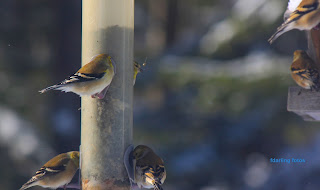 |
| Use descriptive words |
Reading Based on Talking
The first step is encouraging every member of the family to talk to babies with complete sentences while bathing, changing diapers, feeding, strolling, rocking, and holding. Singing counts, too. What do you talk about? Talk in a soothing voice about what you are doing and how much children are loved. Avoid baby language and high pitch.
Scientists know that infants are listening and absorbing language. When these children are able to talk, large vocabularies and eventually complete correct sentences start pouring out of them. Many families just can’t believe what they are hearing.
Parents and grandparents can talk to toddlers while they do every day activities and play.
 |
| Describe in a complete sentence |
What should we have for dinner tonight in the food groups? Let’s sort the socks.
Can you imagine an entire kindergarten of these young children who have been talked to constantly since birth and have had many varied experiences? What readers they will be!
Building a Large Vocabulary
Reading is talking written down. Children must make a connection between what they sound out or recognize as a memorized word (sight word or red word) and all of the words they have stored in their brains. Children who have about 20,000 words stored will be ready.
When families run out energy to carry on discussions, they can pick up a book and read together. Books have a rich vocabulary unlike TV, DVD’s and most other technology entertainment. They use very few words repeatedly according to word counts in research. Children who use these technologies have a very limited vocabulary and often do not like to read. Child psychologists recommend controlled limited use of technology and no use under age two.
Books help families use synonyms
 |
| Read books to build vocabulary |
Books are rich in language that creates strong foundations for readers who will love to read on their own. There is no substitute for reading and talking to children known at this time. In general, the more a family talks and reads, the more likely children will be good readers and curious students. Grandparents can help exhausted parents create a reading and learning family climate.
photos: Fran Darling fdarling fotos
More Ideas and Activities....See the authors’ book “Learning Through the Seasons” at area bookstores and grandparentsteachtoo.org. For more help to prepare young children for success in school see the authors’ web site: www.grandparentsteachtoo.org. Also check our audio Podcasts WNMU Radio 90; Youtube video activities; and join us on Pinterest







